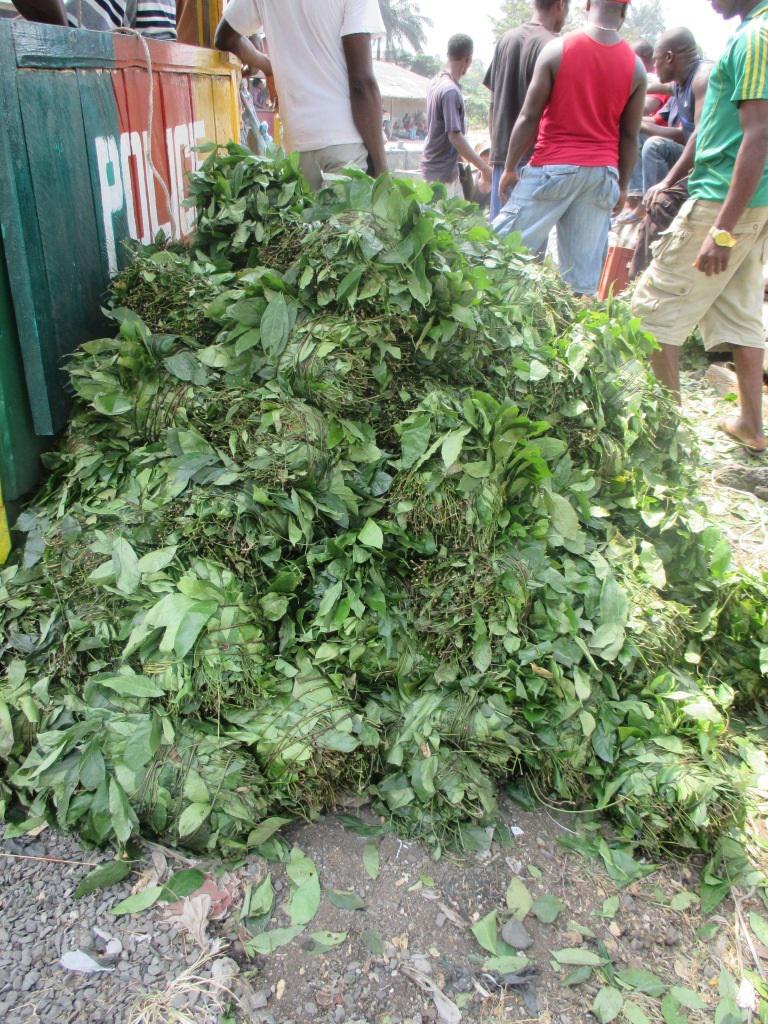Oumar Doungous
Other projects
10 Oct 2016
Propagation of Gnetum africanum and G. buchholzianum for the Conservation of the Wild Populations in Muyuka Subdivision
This project aims at improving the domestication and conservation status of Gnetum africanum and G. buchholzianum.

Harvested Gnetum leaves
G. africanum and G. buchholzianum commonly known as ‘Eru’ are two edible and very similar understory lianas found only in the humid tropical forest of Africa. The two plants have being exploited indiscriminately so facing a high risk of extinction and were listed as near threatened species in the 2011 IUCN red list. Both species are identified as ones of the most important species for domestication in the humid forest of Africa. The possibility of cultivating Gnetum spp. indicates some potential to alleviate pressure on wild populations. So the conservation approach that is currently adopted for Gnetum spp. is that of “Conservation through Cultivation”.
This work will first of all apply the propagation method through cutting on different accessions of G. africanum and G. buccholzianum from three different agroecological zones where the species are grown in Cameroon. So far studies on propagation of Gnetum spp. lianas through cutting were carried out only on one species separately or on Gnetum spp. in bulk. An understanding of the response of Gnetum at the species and agroecological level is essential for prioritizing G. africanum and G. buccholzianum accessions and regions for future sustainable utilization strategies and germplasm collection thereby developing optimal approaches of conservation.
Rooting of cuttings is critical in plant propagation system. In view of improving the method of propagation of Gnetum spp. we will test the effect of three auxins combined with different methods of application on rooting of G. africanum and G. buchholzianum cuttings. Since there are indications that total extinction of G. africanum and G. buchholzianum is avoidable through field production, developing an efficient method for propagation will ensure and enhance the sustainability of these two leafy vines.
This work will also provide technical information to the forestry and agriculture ministries and NGOs involved in Gnetum conservation necessary to develop sustainable management strategies of Gnetum spp. The availability of planting materials will encourage cultivating Gnetum spp. thereby sustaining the management of the species.